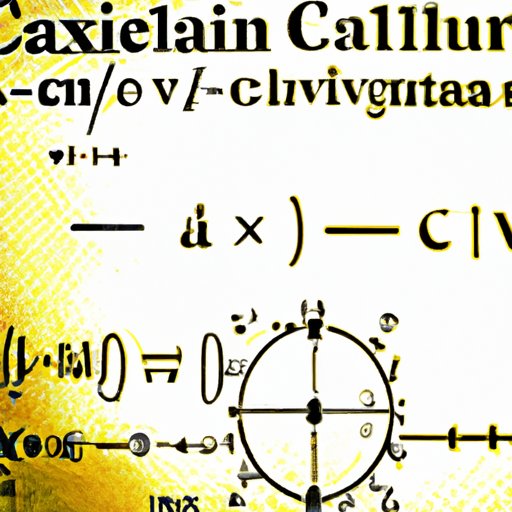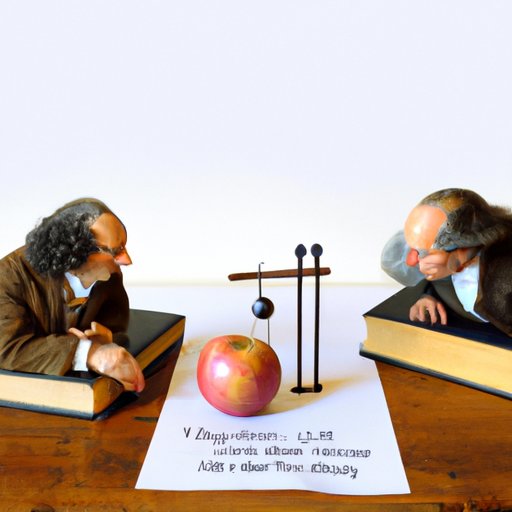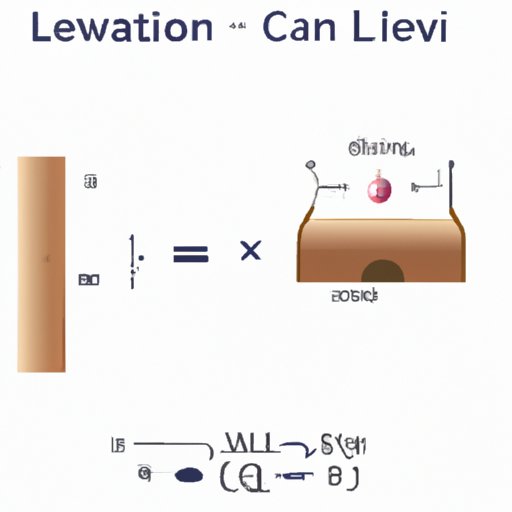Introduction
Calculus is a branch of mathematics that studies how rates of change can be used to analyze physical phenomena. It was first developed in the 17th century by British mathematician Isaac Newton and German mathematician Gottfried Wilhelm Leibniz, who independently created their own versions of the mathematical system. This article will explore why calculus was invented, examining the historical context of the field, the mathematical innovations that led to its development, the pioneering contributions of Newton and Leibniz, its impact on modern science and technology, and its various applications in everyday life.
Exploring the Historical Context of Calculus
Prior to the development of calculus, ancient civilizations had already made significant advances in mathematics. The Babylonians and Egyptians developed algebraic equations, while the Greeks developed geometry and trigonometry. These mathematical systems were used to solve practical problems and to measure the heavens, but they could not accurately describe the nature of motion.
In the 17th century, mathematicians began to investigate the concept of infinitesimals, which are infinitely small quantities that can be used to approximate continuous changes. This led to the development of calculus, which greatly expanded the range of problems that could be solved mathematically.

Examining the Mathematical Innovations that Led to Calculus
The development of calculus was a major breakthrough in mathematics. It allowed for the calculation of instantaneous rates of change and enabled mathematicians to solve problems that had previously been impossible to solve. Differential and integral calculus were two of the most important mathematical innovations that led to the development of calculus.
Differential calculus focuses on the rate of change of one variable with respect to another. It is used to calculate derivatives, which are measures of the slope of a curve at a given point. Integral calculus focuses on the area under a curve, which is used to calculate integrals, or the area between two curves.

Investigating the Pioneering Contributions of Newton and Leibniz
The development of calculus is attributed to the work of two brilliant mathematicians: Isaac Newton and Gottfried Wilhelm Leibniz. While both men were working independently on the same problem, each came up with his own version of calculus. Their respective contributions helped to shape the modern field of mathematics.
Newton’s contributions included the development of the method of fluxions and the formulation of the fundamental theorem of calculus. He also developed the binomial theorem, which is a way of expressing any power of a number as a sum of powers of that number. Leibniz is credited with the development of the notation used in calculus, which makes calculations much simpler and more understandable.
Evaluating the Impact of Calculus on Modern Science and Technology
Calculus has had a tremendous impact on modern science and technology. In physics, it is used to understand the laws of motion, the behavior of force fields, and the properties of waves. In engineering, calculus is used to design bridges, airplanes, and other structures. In computers, calculus is used to optimize algorithms and to create graphics.
Calculus is also used in robotics and artificial intelligence, where it is used to calculate the optimal paths for robots and to develop algorithms for machine learning. Finally, calculus is used in medical research, where it is used to analyze data and create models for understanding diseases.
Analyzing the Role of Calculus in Unifying the Fields of Mathematics, Physics, and Engineering
Calculus has played an important role in unifying the fields of mathematics, physics, and engineering. It provides a common language for these three disciplines, allowing for easier communication and collaboration. Calculus has also allowed for advances in all three fields, as it allows for the integration of concepts from different areas.
For example, calculus is used to model the motion of particles in physics, to design structures in engineering, and to solve optimization problems in mathematics. By unifying the fields of mathematics, physics, and engineering, calculus has allowed for greater advancement in all three fields.
Discussing the Applications of Calculus in Everyday Life
Calculus has numerous applications in everyday life. It is used in navigation systems such as GPS, which use calculus to calculate the shortest route between two points. It is also used in art and architecture, where it is used to create intricate designs and sculptures. Calculus is also used in finance and economics, where it is used to analyze profits and losses and to calculate stock prices.

Investigating How Calculus is Used in Business and Economics
Calculus is widely used in business and economics. It is used to calculate profits and losses, determine optimal strategies, and calculate stock prices. Calculus is also used to analyze market trends, predict customer demand, and develop pricing models. By using calculus, businesses can make more informed decisions and maximize their profits.
Conclusion
Calculus is one of the most important branches of mathematics, and its development has had a tremendous impact on modern science and technology. It was first developed by Isaac Newton and Gottfried Wilhelm Leibniz in the 17th century, and it has since become an indispensable tool in the fields of mathematics, physics, engineering, and economics. Calculus has numerous applications in everyday life, and its use in business and economics has allowed businesses to make more informed decisions and maximize their profits.
The development of calculus was a major milestone in the history of mathematics, and its implications are still felt today. It has allowed for the unification of the fields of mathematics, physics, and engineering, and it has opened up new possibilities for research and innovation. Calculus is an invaluable tool that continues to shape our understanding of the world.
(Note: Is this article not meeting your expectations? Do you have knowledge or insights to share? Unlock new opportunities and expand your reach by joining our authors team. Click Registration to join us and share your expertise with our readers.)
